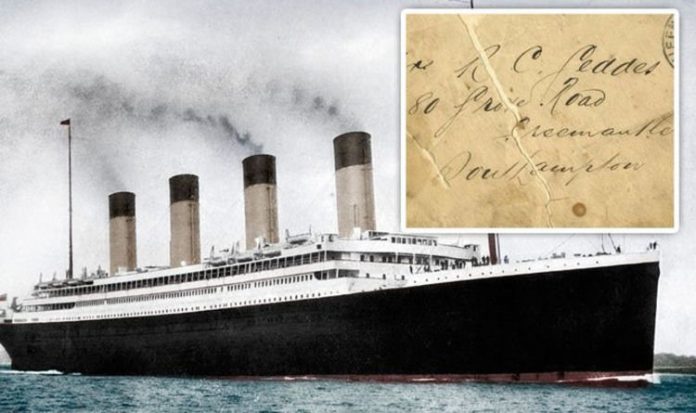RMS Titanic famously hit the Atlantic Ocean floor in the early hours of April 15, 1912, four days after the ship’s maiden voyage from Southampton to New York went sour. The White Star liner had an estimated 2,224 people on board when it struck an iceberg at around 11.40pm, and its sinking two hours and 40 minutes later resulted in the deaths of more than 1,500 people. But a letter, handwritten by a steward on board the vessel a day after leaving Southampton, describes a near-miss with another ship, the SS City of New York.
The two vessels reportedly came within a few feet of each other as Titanic left the docks.
Writing to his wife, Richard Geddes penned: “My dearest Sal, We got away yesterday after a lot of trouble.
“As we were passing the New York and Oceanic, the New York broke her ropes and very nearly ran into us, but we just happened to avoid a collision.
“I could see visions of Belfast, it must have been a trying time for the Captain.”
Reports suggest that some saw the incident as a bad omen and a sign of trouble ahead, but a collision may have also prevented the ill-fated liner’s transatlantic journey to New York.
Continuing in his letter, Mr Geddes added: “I hope you are feeling good and not worrying.
“I am feeling pretty good. With fondest love and kisses to my dear wife and kiddies. Your affectionate husband, Dick x.”
The letter was mailed from Queenstown, Ireland, by the 31-year-old when Titanic picked up passengers on April 11, 1912.
Mr Geddes was one on board when the Titanic went down four days later, sadly losing his life.
How is Boris Johnson handling the coronavirus crisis? Vote in our poll
But his account, written on Titanic stationery and posted in a White Star Line envelope, would survive and go on sale at an auction in Devizes, Wiltshire.
Auctioneer Andrew Aldridge said in 2019: “This lot is sold with the original certified extract, relating to the death of a seaman, giving official confirmation of his death in the Titanic disaster plus copies of photographs of Mr Geddes and his wife.
“It’s an exceptional letter on many levels.
“First and foremost it was written onboard the Titanic, it has its envelope, the lot also contains official paperwork relating to Mr Geddes and finally the content is superb, describing the near-miss that Titanic nearly suffered that would have changed history.”
It is not disclosed how much the letter sold for, but it was valued up to £18,000 by experts.
Following the tragic sinking of the Titanic, numerous expeditions were launched in the hope of discovering its remains, but they were unsuccessful.
It was not until 1985 when the wreck was finally located by Robert Ballard of the Woods Hole Oceanographic Institution during a covert US military mission to recover two sunken nuclear submarines at the bottom of the ocean.
At 2am on September 1 that year, Mr Ballard and several crew members watched as their robotic submarine delivered images of the Titanic.
The US Navy did not expect Mr Ballard to find the Titanic, which is why the event was classified for more than three decades.







